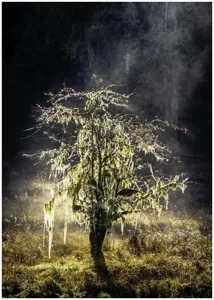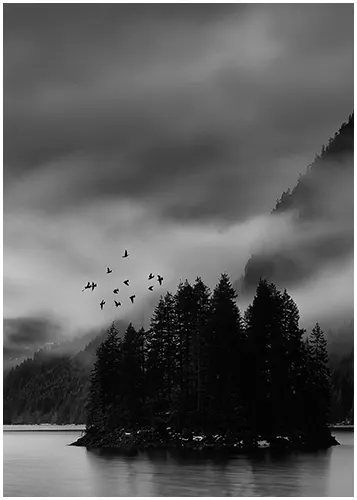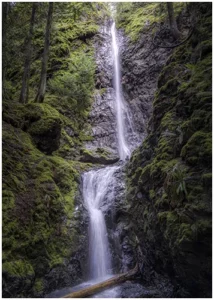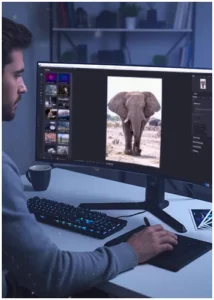
Dealing with Harsh Light in Landscape Photography
Yes, we all know that shooting in harsh light is taboo, and this sounds a


Black and white photography is like a good classic movie, it never goes out of style. This art form lets you document the heart of the scene, showing off what truly matter without being sidetracked by colour. With a focus on light, dark, and detail, it pulls you into the story with rich emotion and attention-grabbing shots.
What makes monochrome photography its own beast? By tossing colour aside, it shines a spotlight on how light and shadow dance together. In this style of photography, shapes, patterns, and overall design take centre stage, more so than in their colourful counterparts.
| Characteristics | Description |
|---|---|
| Emphasis on Contrast | Delivers that dramatic punch between light and dark spaces. |
| Focus on Textures | Brings out surface feel in ways colour often can't. |
| Timeless Appeal | Takes you back in time, evoking memories, wrapped in artistic flair. |
| Simplified Compositions | Cuts out the clutter, letting you zoom in on what's important. |
Going monochrome with your landscape photography offers a handful of perks. It captures a scene’s soul in a way that can stands out.
Here’s why this style rocks:
| Benefits | Description |
|---|---|
| Enhanced mood | Black and white can pack an emotional punch. |
| Stronger Focus on Composition | Says goodbye to colour chaos, says hello to strong shapes and lines in the absence of colour. |
| Versatility | Adapts to all kinds of light, whether the sun’s out or the sky's grey. |
| Increased Detail Recognition | Pulls out those tiny details and patterns that colours might miss. |
Getting a grip on what makes black and white photography tick can lead you to dive deeper into your photographic journey. Whether you’re an old hand or a newbie, honing your monochrome skills can up your artistic expression and take your photo to new heights.
Looking to stretch your budget? Save 43% with Back to School. Plus 10% when you use code bwild10
When you’re diving into the world of black and white landscape photography, the gear makes all the difference. Here, we’re gonna chat about the ideal cameras and lenses to help you take those jaw-dropping shots.
Nailing the right camera is like finding that perfect puzzle piece. It’s key to capturing the soul of black & white landscapes. Both DSLR and mirrorless models bring their A-game, especially those rocking high-resolution sensors. Let’s check out a quick breakdown:
| Camera Type | Key Features | Advantages |
|---|---|---|
| DSLR | Swap-out lenses, manual tweaks | Super versatile, top-notch pics |
| Mirrorless | Light, compact build | Quick-focus, live viewing |
| Full frame | Bigger sensor | Misses less detail, awesome in low light |
| Crop Sensor | More Compact Camera | Easier on the pocket book, still great for beginners |
Your lens choice as a photographer affects your photos in a big way. Varying focal lengths and aperture settings can totally switch up your style in black and white.
Let’s look at your options:
Picking the right camera and lens is a big step in getting the hang of black and white photography. Explore each type, try them out, and see which fits your vibe best.
There are companies that will convert your older or new camera to black & white.
...Bob
Snapping those jaw-dropping black and white shots isn’t just about clicking a button; it’s mastering a mix of tricks. Get comfy with light, shadows, and how you compose your picture, and you’re halfway there to producing eye-catching monochrome photos.
Light and shadows in photography are like peanut butter and jelly, they just work! They outline what’s in front of you, make things pop, and add a layer of depth to your photos. Nail this, and your shots will be awesome!
| Time Of Day | Characteristics | Monochrome |
|---|---|---|
| Golden hour | Soft warm glow | You bet! |
| Midday | Bright lights, bold shadows | Yes! Just be careful |
| Blue Hour (just before sunrise/after sunset) | Cool colours, gentle light | Definitely |
| Overcast | Smooth lighting, fewer contrasts | Absolutely |
Putting it all together in monochrome is more than just clicking “black and white” in post-edit. Without colours distracting your eye, having a solid composition is your secret weapon. Try these tricks out:
When you put in the time to master playing with light, shadow, and nailing compositions, you’ll be snapping monochrome landscapes that truly represent the art of black and white photography.
Editing’s a game-changer in black and white photography. It’s where you get to sprinkle some magic on your pictures, making them pop and highlighting those hidden gems in the scene. Let’s dive into the tools and nifty tricks to raise the bar on your monochrome landscapes.
You’ve got choices when it comes to editing software for black and white images, each bringing something unique to the table to help make your photos shine.
| Software Type | Cool Stuff It Does |
|---|---|
| Basic editor | Easy to use, gets the simple stuff done |
| Intermediate Software | More control, for the curious, comes with fun filters |
| Professional Tools | Full of features, tweak every little detail |
Want your black and white landscapes to grab attention? Check out these handy tips:
Roll these tips into your editing routine and watch as your black and white landscapes transform, capturing the magic in each frame.
Exploring the magic of black and white photography for beginners reveals a timeless art form. Monochrome photography, is emphasizing by light, shadow, and composition, allowing us to see the world without colour distracting us. We discussed how black and white landscapes enhance mood, simplify compositions, and highlight textures.
Choosing the right equipment, like DSLRs or mirrorless cameras with full-frame or crop sensors, and lenses from wide-angle to prime, is crucial. Mastering techniques like understanding light and shadow, using the rule of thirds, leading lines, and negative space, elevates your photos.
Finally, post-processing with your favourite editing software and techniques like dodging, burning, and adjusting levels allows you to refine your images and truly capture the emotional depth of a scene. Embracing these elements can unlock your creative potential and help you craft stunning black and white photographs.
Monochrome landscape photography refers to the technique of capturing landscape images using a single colour tone, predominantly in shades of gray, resulting in black and white landscape images. This style emphasizes contrast, texture, and form, allowing photographers to focus on the composition and emotional impact of the landscape without the distractions of color.
When shooting black and white landscape photography, key camera settings include adjusting the shutter speed, ISO, and aperture. A slower shutter speed can create motion blur in elements like water, while a higher ISO setting can help capture details in low-light conditions. It’s also advisable to shoot in RAW format to allow for more extensive post-processing options in software like Adobe Lightroom.
To improve your monochrome landscape photography, focus on photographic composition techniques such as the rule of thirds and leading lines. These elements guide the viewer’s eye through the landscape photo and create a sense of depth. Experimenting with different compositions and using a neutral density filter can also enhance the final image by allowing for longer exposures.
Shooting in black and white removes the distraction of color, allowing viewers to focus on textures, shapes, and contrasts. It can evoke a sense of nostalgia or drama, making black and white landscape photography particularly powerful. Additionally, it can simplify complex scenes into more harmonious landscape images, emphasizing light and shadow.
For black and white conversion, software like Adobe Lightroom is widely used. It offers tools for adjusting contrast, brightness.
| Lens Type | Focal Lengths | Suitable For |
|---|---|---|
| Wide-angle | 14mm-36mm | Sweeping landscapes |
| Standard | 24mm-70mm | All-around champ for different settings |
| Telephoto | 70mm-200mm | Zoom in on details and far-off stuff to create striking black and white portraits. |
| Prime | 24mm, 50mm, 85mm | Crisp pics with open apertures |

Yes, we all know that shooting in harsh light is taboo, and this sounds a

As a passionate waterfall photographer, I’ve discovered that exposure time and amount of light, be

Do you remember that perfect shot you took? But then, post-processing was a struggle? You’re